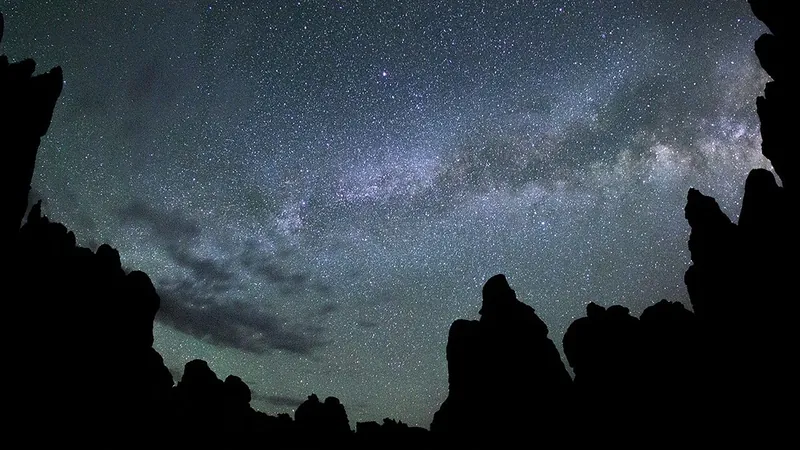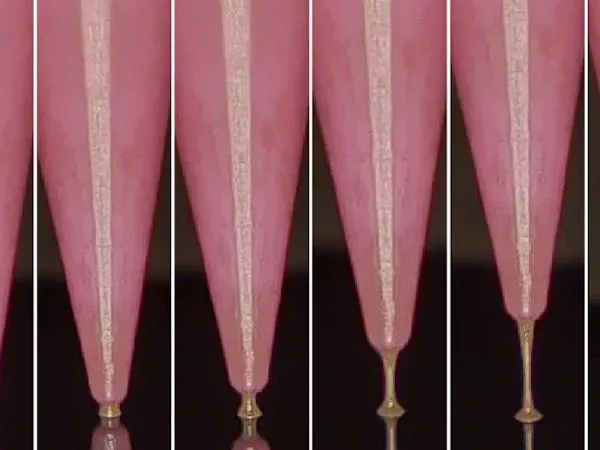
Unlocking the Secrets of Dark Matter: USC Scientists Create Milky Way Twins
2025-06-16
Author: Wei Ling
In an exciting breakthrough, a team of scientists led by USC has utilized supercomputers to create simulated twins of our very own Milky Way galaxy. This innovative project, dubbed COZMIC (short for Cosmological Zoom-in Simulations with Initial Conditions beyond Cold Dark Matter), aims to unravel one of the universe's greatest enigmas: dark matter, an unseen substance that constitutes approximately 85% of all matter.
The research team, comprised of cosmologist Vera Gluscevic from USC, alongside Ethan Nadler and Andrew Benson, has made significant strides in understanding how galaxies form and evolve in a universe filled with dark matter.
The Dark Matter Mystery Unveiled
Scientists have long recognized the existence of dark matter, primarily evidenced by its gravitational influence on the motion and cohesion of galaxies. For instance, galaxies rotate at such high speeds they should break apart, yet they remain intact – a phenomenon that many believe is due to dark matter, a concept first proposed by Swiss scientist Fritz Zwicky in 1933.
However, studying dark matter poses unique challenges; since it neither emits light nor energy, it cannot be observed directly. Instead, researchers monitor its effects on visible structures like galaxies, akin to analyzing someone’s silhouette without ever seeing the person behind it.
Revolutionizing Simulations with COZMIC
The COZMIC project represents a major leap in galaxy simulation. By incorporating groundbreaking physics alongside standard particle physics and relativity, the researchers generated detailed cosmological simulations to explore various theories about dark matter.
"Our goal is to assess the mass and interactions of dark matter particles with everything around them," Gluscevic explained. "For the first time, we can simulate galaxies similar to ours under drastically different physical laws and measure them against actual astronomical observations."
Testing Dark Matter Scenarios
The researchers modeled three distinct scenarios of dark matter behavior:
1. **Billiard-Ball Model**: This scenario depicts dark matter particles colliding like billiard balls, smoothing out small-scale structures and potentially removing satellite galaxies from the Milky Way.
2. **Mixed-Sector Model**: Created as a hybrid scenario where some dark matter particles interact with normal matter, while others pass through it undisturbed.
3. **Self-Interacting Model**: This model simulates a universe where dark matter particles interact with one another both at the universe's inception and in present day, influencing galaxy formation throughout cosmic history.
A New Dawn in Dark Matter Research
This ambitious work marks a significant advancement in the quest to decode the nature of dark matter. The COZMIC team anticipates that by comparing their simulated galaxies to actual telescope images, they could get closer than ever to solving this cosmic puzzle.
"We are pushed to ask, ‘Which version of the universe resembles our own most closely?’" Gluscevic remarked. As they look ahead, the team aims to validate their simulations against telescope data, potentially revealing the elusive signatures of dark matter in real galaxies.
This next phase could bring humanity one step closer to understanding not just what dark matter is, but also its monumental role in shaping the universe as we know it.



 Brasil (PT)
Brasil (PT)
 Canada (EN)
Canada (EN)
 Chile (ES)
Chile (ES)
 Česko (CS)
Česko (CS)
 대한민국 (KO)
대한민국 (KO)
 España (ES)
España (ES)
 France (FR)
France (FR)
 Hong Kong (EN)
Hong Kong (EN)
 Italia (IT)
Italia (IT)
 日本 (JA)
日本 (JA)
 Magyarország (HU)
Magyarország (HU)
 Norge (NO)
Norge (NO)
 Polska (PL)
Polska (PL)
 Schweiz (DE)
Schweiz (DE)
 Singapore (EN)
Singapore (EN)
 Sverige (SV)
Sverige (SV)
 Suomi (FI)
Suomi (FI)
 Türkiye (TR)
Türkiye (TR)
 الإمارات العربية المتحدة (AR)
الإمارات العربية المتحدة (AR)